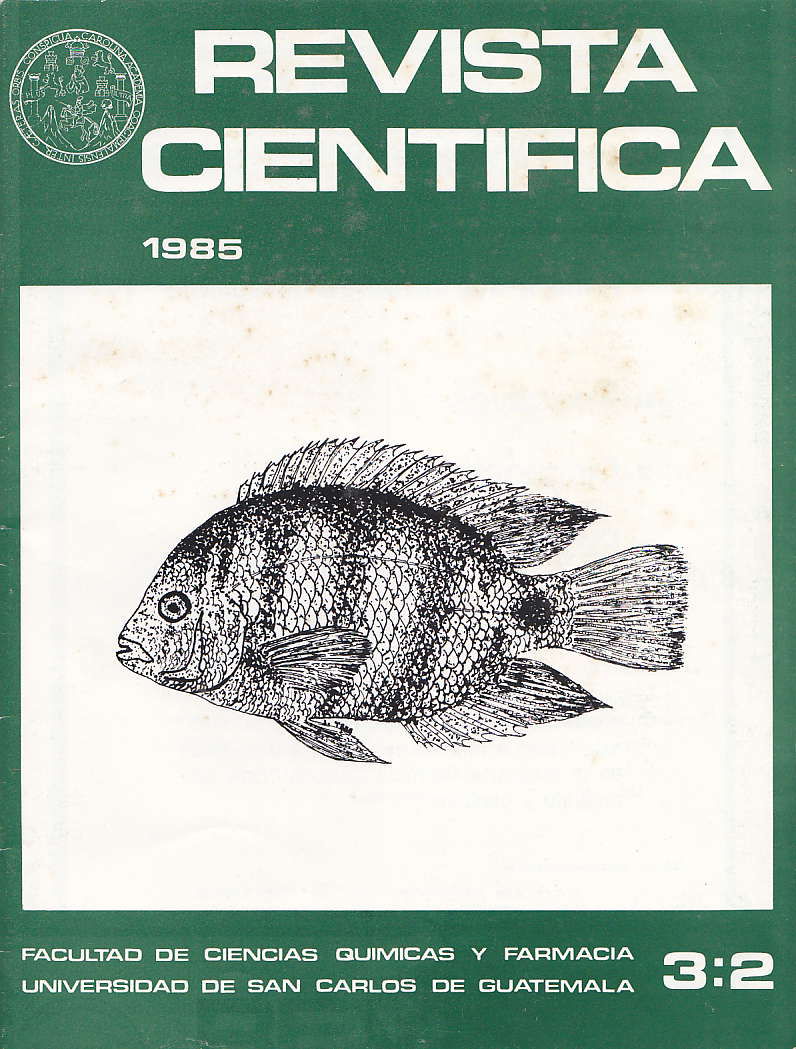Chemical characterization of pectin obtained from coffee processing waste
DOI:
https://doi.org/10.54495/Rev.Cientifica.v3i2.459Keywords:
chemical characterization, pectin, coffee processing wasteAbstract
Pectic substances are integral components of plant cell structure and function as cementing agents in their middle lamellae. This group includes pectin, which refers to a group of partially methoxylated, water-soluble polygalacturonans, whose composition varies depending on the source and the conditions used for their isolation. Its function in fruits and vegetables is primarily related to retaining their shape and firmness. Its main industrial use is in the preparation of jellies and jams. Traditionally, pectin has been obtained from the waste products of coffee and apple processing. Although there is no shortage of the raw material pectin, there will always be interest in obtaining it at a lower price. Coffee mucilage and pulp are known to contain, among other components, appreciable amounts of pectin (1, 2, 3, 4). Since Guatemala is predominantly a coffee-growing country, the waste products obtained from coffee processing constitute a potential source of pectin. In theory, approximately US$20,574,119.53 could be obtained from the processing of all the coffee mucilage produced in the country. However, the data provided in the literature on the properties and quality of coffee pectins are scarce and incomplete, so further research into their characteristics is necessary, including their role in the manufacture of jellies. The fundamental objective of this work is to chemically and physically characterize the pectin extracted from coffee mill waste (mucilage and pulp) to determine if it is of acceptable quality for the manufacture of food, pharmaceutical, and industrial products in general. To this end, the characteristics of the coffee pectins were compared with those of some standardized commercial pectins and with a pure critical pectin. An analysis of variance was used to determine whether a statistically significant difference existed between the studied characteristics at the 5% level. In cases where this analysis was significant, the sample means between which there was a difference were determined by applying Duncan's Multiple Interval test.
Downloads
References
Coleman RJ et al. Pectic Acid from the mucilage of coffee cherries. Arch. Biochem. Biophys. 1955; 59: 157-164. https://doi.org/10.1016/0003-9861(55)90472-0 DOI: https://doi.org/10.1016/0003-9861(55)90472-0
Calle H. Métodos de Extracción de las Pectinas de Café, CENICAFE. 1962; 13: 69-74.
Menchú JF et al. Posibilidad de recuperación de la pectina del mucílago del café. Guatemala: Instituto Centroamericano de Investigación y Tecnología Industrial, Doc. Tec. (Presentado en la Primera Reunión Internacional sobre la Utilización de Subproductos del Café en Alimentación Animal y otras aplicaciones Agrícolas e Industriales. Turrialba, Costa Rica) 1974. 15 p.
Correa JBC, Odebrecht S, Fontana JD. Polysaccharides from the epicarp and mesocarp of coffee beans. II. Fractionation and partial acid Hydrolysis of water-soluble pectin. An Acad. Bras. Cieñe. 1974; 46: 349-356. (En C. 1975. 83: 203760)).
Rombouts FM. Methods in Pectin Analysis and Enzyme Preparations. Documento sin publicar,
comunicación personal. 1982. 198 p.
Kintner PK, Van Burén JP. Carbohydrate Interference and Its correction in Pectin Analysis using the m-Hydroxydiphenyl Method. J. Food Sci. 1982;47:756-759, 764. https://doi.org/10.1111/j.1365-2621.1982.tb12708.x DOI: https://doi.org/10.1111/j.1365-2621.1982.tb12708.x
McCready RM, McComb EA. Colorimetric Determination of Pectic Substances. Anal. Chem. 1952; 24: 1630-1632. https://doi.org/10.1021/ac60070a036 DOI: https://doi.org/10.1021/ac60070a036
Schultz TH. Determination of the Degree of Esterification of Pectin. p. 189-194. (In Whistler RL, Be Miller JN, Wolfrom ML, eds. Methods in Carbohydrate Chemistry. New York: Academic Press. Vol. V, 1965. 463 p.)
Walter RH, Sherman RM, Lee CY. A comparison of Methods for Polyuronide methoxyl determination. J. Food. Sci. 1983; 48: 1006-1007. https://doi.org/10.1111/j.1365-2621.1983.tb14957.x DOI: https://doi.org/10.1111/j.1365-2621.1983.tb14957.x
Horwitz W, ed. Official Methods of Analysis of the Association of Official Analytical Chemists. 13 ed. Washington: Association of Official Analytical Chemists., 1980. 1018 p.
Hodge Je, Hofreiter BT. Determination of Reducing Sugars and Carbohydrates. p. 380-390. (In Whistler RL, Be Miller JN, Wolfrom ML, eds. Methods ein Carbohydrate Chemistry. New York: Academic Press. Vol I, 1962. 589 p.)
FAO. JEFCA specifications for identity and purity of carrier solvents, emulsifiers and stabilizers, enzyme preparations, flavouring agents, food colours, sweetening agents and other food aditives. FAO Food and Nutrition Paper No. 19. Roma, Italia, 1981. 251 p.
FAO. Guide to specifications for general notices, general methods, identification tests, test Solutions, reference materials. FAO Food and Nutrition Paper No. 5. Roma, Italia, 1978. 91 p.
IFT Committee. Pectin Standardizaron. Food Tech. 1959; 13: 496-500.
Joseph GH, Baier WE. Methods of determining the firmness and setting time of pectin test jellies. Food Technol. 1949; 3: 18-22.
Hinton CL. The setting temperatura of pectin jellies. J. Sci. Food Agr. 1950; 1: 300-307. https://doi.org/10.1002/jsfa.2740011004 DOI: https://doi.org/10.1002/jsfa.2740011004
Food Chemicals Codex. Food and Nutrition Board, Div. Biol. Sci., Assembly Life Sci., National Research Council. 3 ed. National Accdemy Press, 1981. 770 p.
Bulgarian Standard BDS 2608-80. Bulgaria, 1980. (En FSTA 15, 2U130).
Downloads
Published
How to Cite
Issue
Section
License
Copyright (c) 1985 Delia Arrióla, Ricardo García

This work is licensed under a Creative Commons Attribution 4.0 International License.
Authors who publish with this journal agree to the following terms:
- Authors retain copyright and grant the journal right of first publication with the work simultaneously licensed under a Creative Commons Attribution License 4.0 that allows others to share the work with an acknowledgement of the work's authorship and initial publication in this journal.
- Authors are able to enter into separate, additional contractual arrangements for the non-exclusive distribution of the journal's published version of the work (e.g., post it to an institutional repository or publish it in a book), with an acknowledgement of its initial publication in this journal.
- Authors are permitted and encouraged to post their work online (e.g., in institutional repositories or on their website) prior to and during the submission process, as it can lead to productive exchanges, as well as earlier and greater citation of published work.









